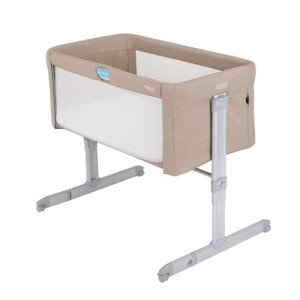Cots and Tots: The Essential Guide to Choosing the Right Cot for Your Child
Inviting a brand-new baby into the household is one of life's most joyful experiences. As moms and dads prepare for their kid's arrival, among the crucial choices involves picking a safe and comfy sleeping area: the cot. This article talks about important aspects to think about when choosing a cot, the various types readily available, security standards, and caring for your child's sleeping environment.
What is a Cot?
A cot, also called a crib in some regions, is a small bed created for infants and toddlers. Generally confined with high sides, cots promote security by preventing the kid from rolling out while sleeping. Cots can be made from wood, metal, or a combination of both, and they often include adjustable bed mattress heights to accommodate kids as they grow.
Why is Choosing the Right Cot Important?
Acquiring a cot is not merely about aesthetic appeals. A well-chosen cot ensures the safety, convenience, and well-being of a child during their developmental months and years. The right cot can likewise make a substantial effect on a baby's sleep quality, which is crucial for development.
Secret Factors to Consider When Choosing a Cot
Safety Standards
- Ensure the cot satisfies security policies established by national and global bodies. Look for labels or certificates that signify compliance.
Material Quality
- Select cots made from non-toxic products, particularly those devoid of hazardous chemicals such as formaldehyde.
Adjustable Mattress Heights
- As the child grows, an adjustable bed height permits moms and dads much easier access to their baby when they are small and guarantees security as they start to pull up and stand.
Spindle Width
- The distance between the slats should usually be no more than 2.5 inches to avoid the kid from getting stuck.
Stability and Durability
- A steady cot with strong building and construction will last through several phases of a child's advancement.
Convertible Options
- Some cots are developed to change into young child beds, which can be a cost-effective choice in the long run.
Kinds of Cots
There are various cots available on the marketplace, each serving different functions and requirements:
| Type of Cot | Description | Benefits |
|---|---|---|
| Requirement Cot | A standard crib for infants. | Economical and basic design. |
| Convertible Cot | Can be changed into a toddler bed or day bed. | Longer use as the child grows. |
| Travel Cot | Portable and light-weight for travel. | Convenient for journeys and space-saving. |
| Co-Sleeper Cot | Connects to the side of the moms and dad's bed. | Promotes easy gain access to during the night. |
| Bassinet | Smaller sized sleeping space for infants approximately 6 months. | Space-efficient for babies. |
Picking the Right Mattress
Choosing an appropriate mattress is as crucial as picking the cot itself. A firm mattress is typically suggested to minimize the threat of suffocation and SIDS (Sudden Infant Death Syndrome).
Cot Accessories
When setting up a cot, moms and dads may consider the following devices:
- Fitted Sheets: Ensure the sheets fit comfortably to prevent any risk of entrapment.
- Cot Liners: While these can protect the cot, they can also present risks, so they ought to be utilized with care.
- Blankets and Sleeping Bags: A lightweight sleeping bag is recommended over blankets for safe sleeping.
FAQs
What age is proper for my child to transition from a cot to a bed?
Transitioning generally happens between 2 to 3 years of age. cots4tots.co.uk is ready include climbing up out of the cot consistently or showing interest in oversleeping a 'huge kid' bed.
How can I guarantee my baby sleeps safely in the cot?
To enhance security, always lay your baby on their back, keep the cot without pillows, packed animals, and heavy blankets, and make sure the mattress fits snugly.
Do I need to buy a brand-new cot?
While second-hand cots can be cost-efficient, it's vital to check for security recalls, wear and tear, and guarantee it fulfills existing safety standards.
What should I do if my baby tries to climb out of the cot?
If your baby starts climbing out, it may be time to transition to a toddler bed or make changes such as decreasing the bed mattress position.
Taking care of Your Cot and Tots
Keeping a clean and safe sleeping environment is essential. Regularly check the cot for any loose parts or damage and clean the bed mattress and sheets regularly. Following the producer's standards for care will help extend the cot's life and ensure a safe environment for your child.
Purchasing the best cot is a considerable decision that goes beyond mere visual appeals. Security, convenience, and adaptability are vital. By considering the different types of cots available and sticking to safety guidelines, parents can create a sleeping space that supports their child's growth and offers assurance. Ultimately, every "cot and toddler" journey is special, however making informed decisions can lead to many dream-filled nights.

